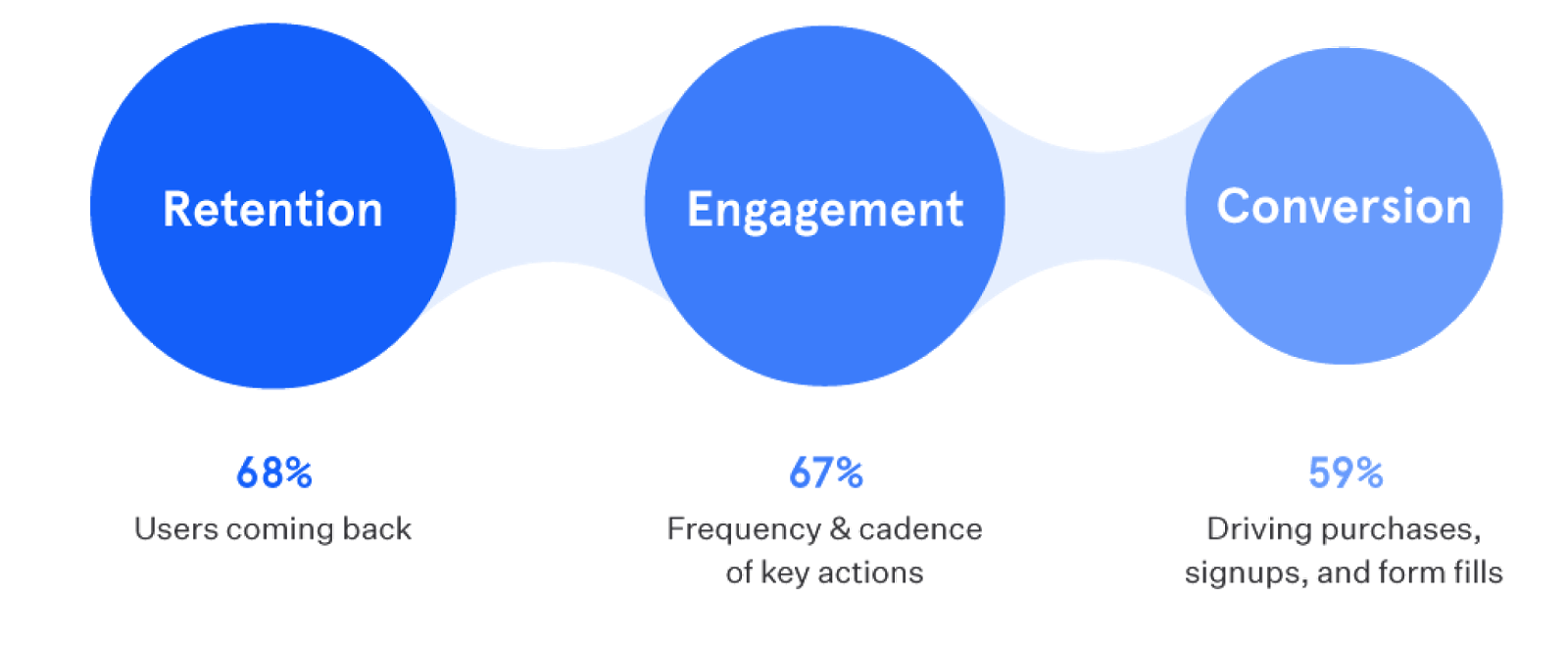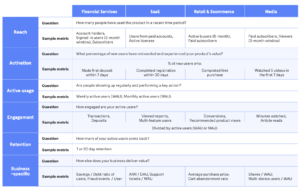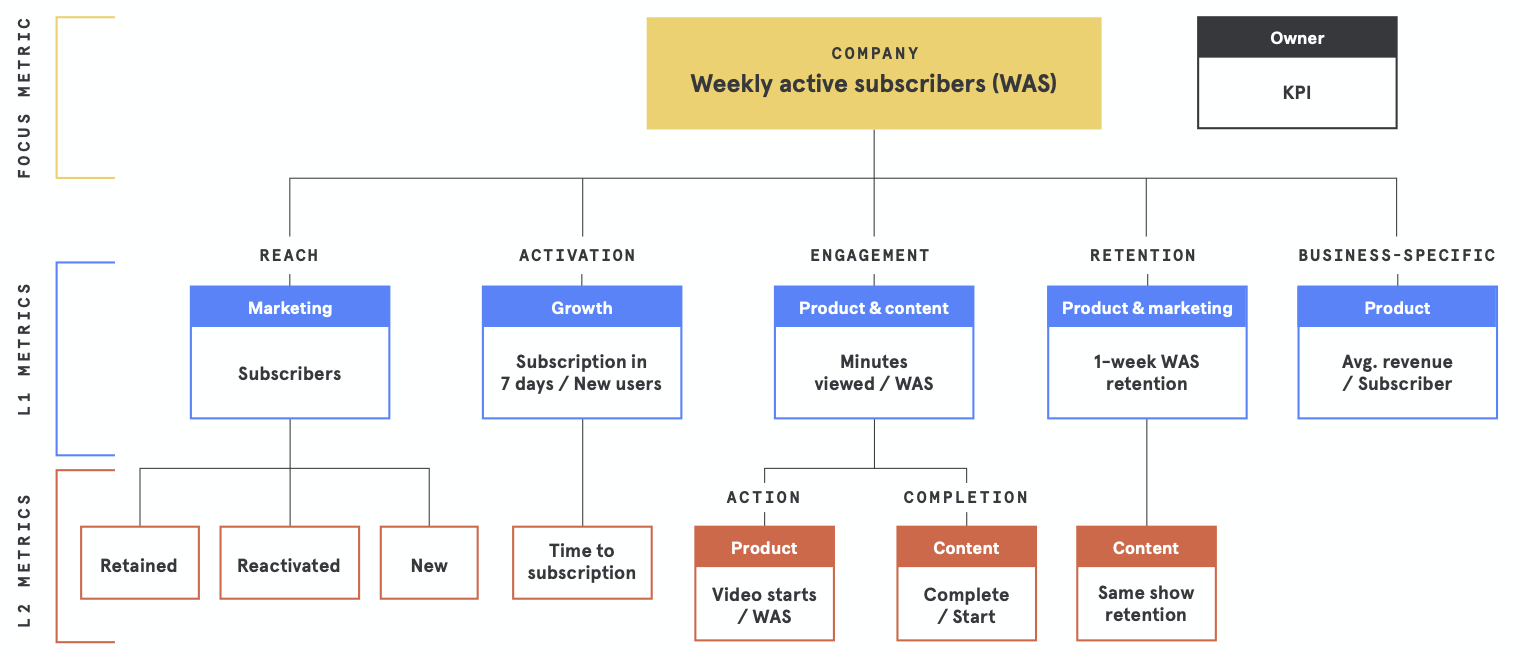Metrics for Product Management
Product management metrics provide the key insights product managers need in order to track product health and performance. By setting and tracking the right metrics, your product is more likely to give you accurate insights on what provides value to your current users—and help convert prospective ones.

Learn what product management metrics are, which ones are most commonly used by product teams, and how to choose and track your own metrics in order to grow your business.
Why should product managers track product metrics?
Simply put, you can only move what you measure. Gone are the days of blindly guessing what people might want to see in your product. Gut feelings, speculation, and the gamble of collecting feedback from a small segment of your user base are no longer viable strategies for making product decisions, big or small. If you want to stay ahead of the curve, edge out the competition, and—most importantly—drive value for your potential and existing customers, you need to set the right metrics for your business and track them diligently.
Product managers use product metrics to:
- Understand which features are most popular, underutilized, or missing the mark altogether
- Learn how users engage with a product
- Find out how many users return after signing up
- Gauge customer satisfaction within your product
- Identify power users and other user cohorts
Which metrics should product managers track?
“So, what metrics should I be tracking?” If you build, manage, or market products, you’ve likely asked yourself this question before.
Key metrics categories
Here are the most commonly used product management metrics:
- Engagement – The frequency and cadence of key actions
- Revenue – Sales revenue generated
- Conversion – Driving purchases, sign-ups, form-fills, etc.
- Retention – Users coming back
- Activation – A user’s first value moment
- Active usage – Daily, weekly, monthly, or even annually active users
- NPS – Customer satisfaction
But which metrics matter most? A survey of nearly 500 product professionals across the globe revealed that these are the top 3:
- Retention
- Engagement
- Conversion

While active usage, reach, activation, engagement, conversion, and retention are widely considered to be top metrics used by leading product teams across the globe, that doesn’t mean they’re the only ones you should be considering, nor does it mean that these are the metrics that will be most meaningful to you. Businesses and products are all unique and have different goals based on stage and ambitions.
Industry-specific metrics
One way to better understand which metrics you should be tracking is to point to what peers in your industry are measuring. Here are some of the most common examples we’ve seen across industries:

Although these metrics are more industry-specific, that’s still not enough. There is no such thing as a one-size-fits-all metric. In order to truly get the most out of your metrics, they must be business-specific.
Input vs. output metrics
While many top product teams count Revenue and Retention as their most important metrics, both are actually output metrics. By the time you’re able to actually measure your output, it’s probably going to be too late to impact it. This is why you need to identify and track input metrics that are specific to your product, business, and industry.
A well-known example is Facebook’s oft-discussed “7 friends in 10 days” metric. After observing that new users who added 7 friends in their first 10 days were much more likely to become long-term users (i.e., retain), this became an input metric used to measure and support Retention, one of their key output metrics.
Finding your focus metric
Another way to think about input vs. output is to think of your output metric—an important, but ultimately lagging indicator of whether you’re succeeding or failing—as your focus metric, while your inputs are all the supporting metrics that service that key metric. Though sometimes referred to as the “north star metric,” here at Mixpanel, we prefer to call it a focus metric, since we don’t believe there can be just one metric to rule them all. Supporting metrics will typically be more specific, measurable, actionable, relevant, and time-bound than the overarching focus metric (think back to Facebook’s “7 friends in 10 days” metric). These are the checks and balances product teams use to ensure they are on the right track—or, conversely, to indicate that adjustments may be needed.
A subscription-based video streaming company, for example, might structure their metrics framework like this:
 How should product managers track their chosen metrics?
How should product managers track their chosen metrics?
Now you know what you want to track, but how do you actually track it?
Tracking product metrics can be a huge undertaking without the right tools in place. Specifically designed to answer any and every question product teams may have about their metrics, a product analytics platform like Mixpanel is the most powerful and efficient way to track, manage, and improve the metrics that matter most to businesses in all verticals and growth stages.
With a product analytics platform and a solid metrics strategy in place, product managers can effortlessly:
- Track the metrics that matter most without all the distractions of data that doesn’t apply
- Marry online and offline data for a complete picture
- Automatically generate reports with actionable insights that answer important product development and customer questions
- Segment users and other types of data to understand their metrics on a more granular level
- Run A/B tests to improve conversion, engagement, and customer satisfaction
Lastly, it’s imperative to remember that the goal of measurement isn’t just to track change over time; it is to effect change as well. To observe metrics over time requires rigor, discipline, and focus. To improve them requires all that, plus ingenuity. And that’s what building and managing products is all about.